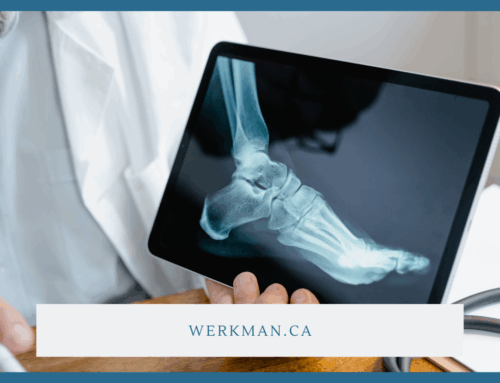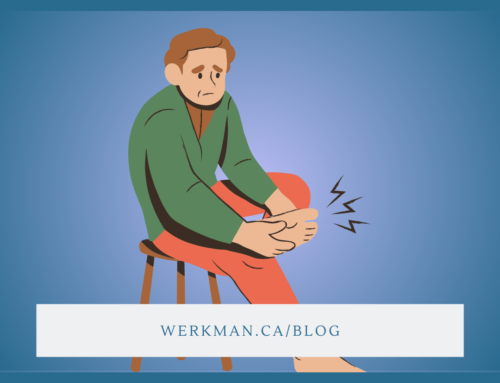Why You Shouldn’t Ignore Foot Pain
(Even If It Comes and Goes)
Do you find yourself limping for a few steps in the morning, only to feel fine later? Or maybe you ignore occasional aches after walking or working? Don’t dismiss the signs! Chronic foot pain often starts this way.
Foot pain that comes and goes is still a red flag. 🚩 Here’s why it matters:
❗ Pain Is a Signal
Your feet carry you through thousands of steps a day. If you’re experiencing recurring discomfort, your body is trying to tell you something, whether it’s due to overuse, improper footwear, or a mechanical imbalance.
🦶 Delayed Diagnosis = Bigger Problems
Many people wait until the pain becomes severe or constant. However, conditions such as plantar fasciitis, tendonitis, neuromas, and arthritis all respond best to early treatment. Delaying care may lead to long-term inflammation or structural changes.
👣 Your Chiropodist Can Help
At Werkman Boven, we assess the root of your chronic foot pain, not just the symptoms. We look at:
-
Footwear Habits
What you wear on your feet every day has a major impact on your foot health. Tight, unsupportive, or worn-out shoes can lead to issues like bunions, arch pain, and calluses. At Werkman Boven, we take time to understand your daily footwear choices, whether you’re in dress shoes, runners, or steel-toed boots. By identifying problem footwear and guiding you toward supportive, properly fitted options, we help reduce pain and prevent further damage. -
Gait and Posture
The way you walk (gait) and carry your body (posture) affects every step you take. Small imbalances, such as favouring one side or having feet that roll in or out, can lead to chronic foot, knee, hip, or even back pain. Our team carefully observes your walking pattern to detect these hidden stress points. With this insight, we can recommend treatments like orthotics or exercises to correct your gait and improve your overall posture. -
Joint Mobility
Healthy foot function depends on the smooth movement of many small joints. Limited mobility in the toes, ankles, or midfoot can lead to stiffness, pain, and reduced shock absorption. During your assessment, we gently test the range of motion in your joints to identify restrictions or early signs of arthritis. Improving joint mobility can significantly enhance comfort, stability, and ease of walking. -
Muscle Strength
Strong foot and lower leg muscles are essential for maintaining balance, absorbing impact, and supporting your arches. Weak or imbalanced muscles can contribute to common problems, such as plantar fasciitis or ankle instability. We assess your muscle strength and may prescribe targeted strengthening exercises to help restore proper function and reduce pain over time.
We create a personalized treatment plan that may include orthotics, footwear changes, manual therapy, or shockwave therapy, depending on your specific needs.



